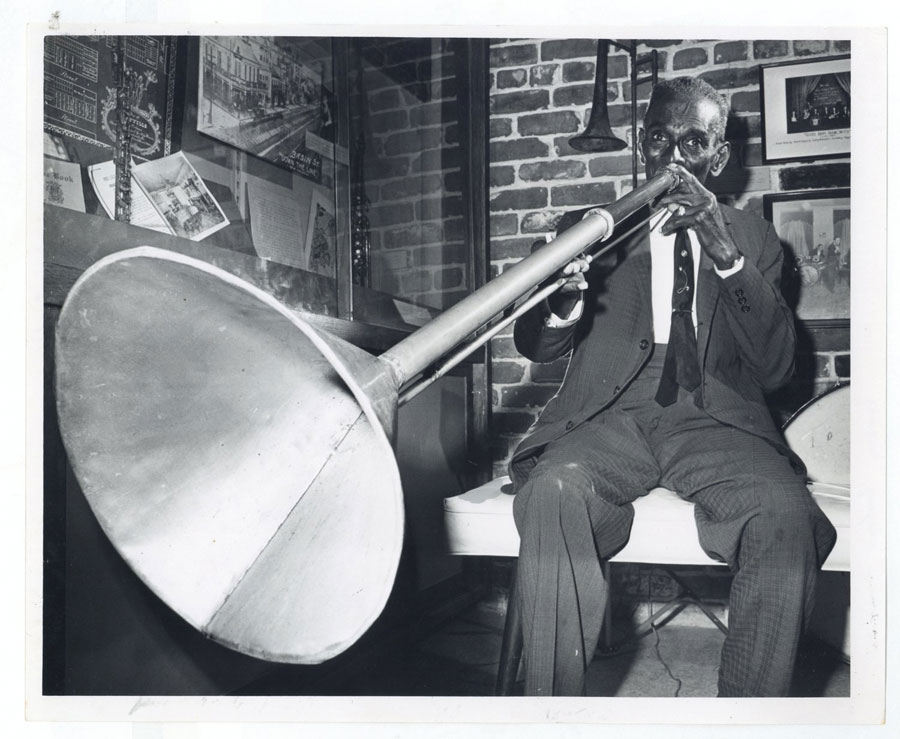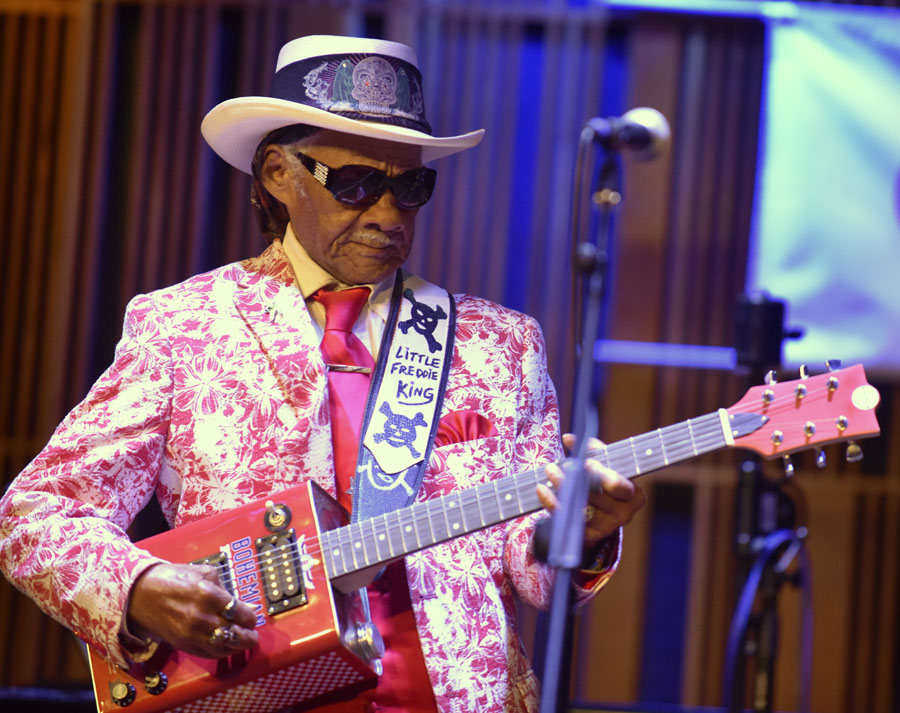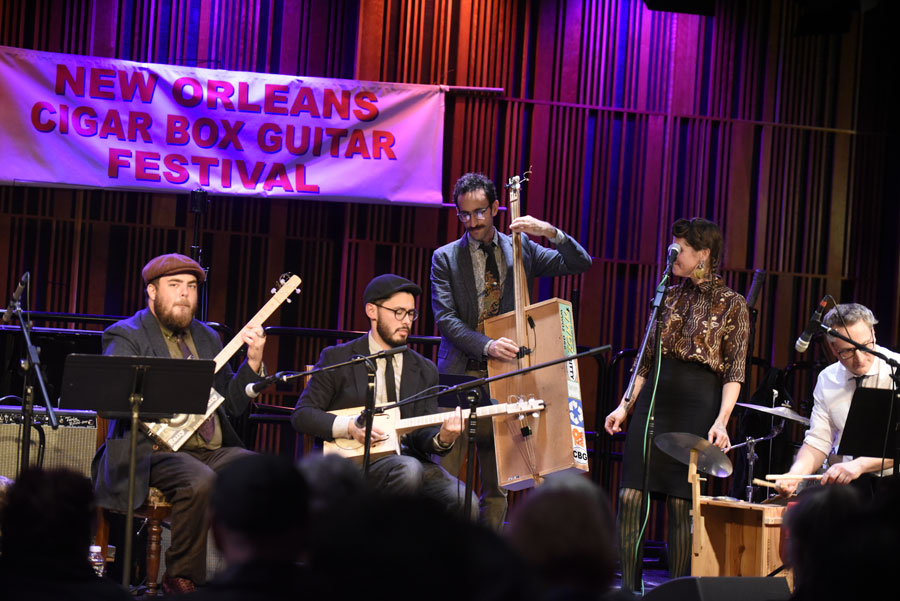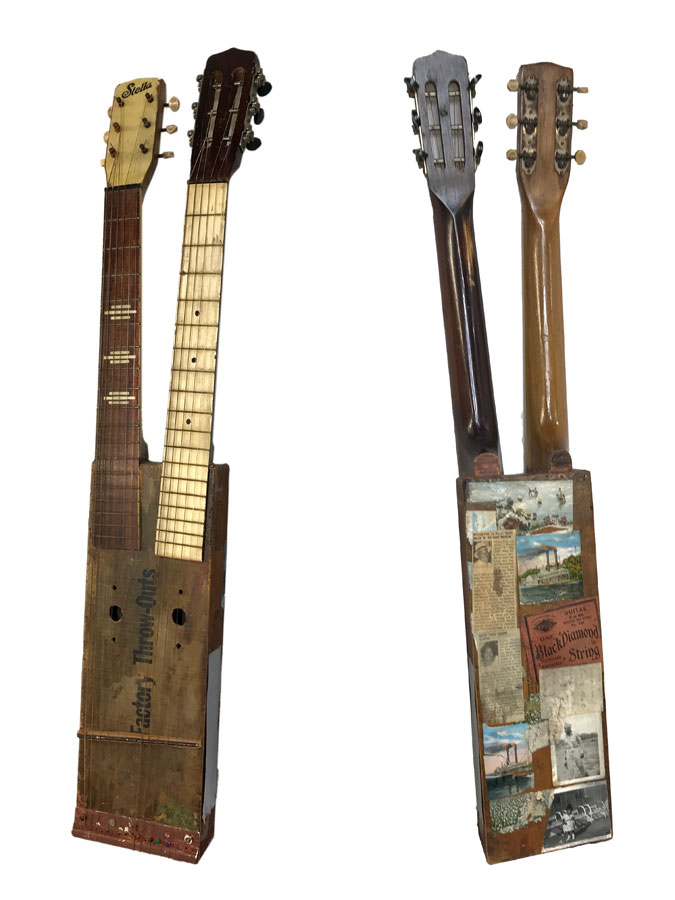March 03, 2023
People have been making instruments since the beginning of human history. There is something inherent in our species and development that makes us want to create and express ourselves. Rattles made of bird skulls and turtle shells, whistles fashioned from the wing and leg bones of large birds, and eagle bone and sugarcane flutes have been found at Native American mounds. People need to make sound, so they make things that create sound.
Throughout much of American history, commercially made instruments were too expensive for the average person so they often made their own. Well into the 20th century, many musicians started with cigar boxes, which were once ubiquitous and could be re-purposed as bodies for fiddles, guitars, diddley bows (single string instruments played with a glass or metal slide,) and banjos. Early rock-and-roller Carl Perkins and seminal bluesman Blind Willie Johnson played their first songs with homemade cigar box guitars and diddley bows. Factories were able to mass produce instruments in the mid-20th century, and they became less costly and more widely distributed. As a result, homemade instruments became less popular but were still played in certain places like logging camps in the Appalachian Mountains, and levee camps in Mississippi.
It should come as no surprise that the history of homemade instruments in New Orleans provides colorful examples of both the instruments and their makers. In late 19th and early 20th century New Orleans, many kids played homemade instruments in “spasm” bands. One of them was jazzman Emile “Stalebread” Lacoume, leader of the Razzy Dazzy Spasm Bzujand.
Quite a few spasm band performers went on to become professional musicians, including Danny Barker who wrote, “There were many spasm bands in the city. They played all sorts of gadgets that produce sounds: musical saws, washboards, spoons, bells, pipes, sandpaper, xylophones, tub bases, kazoos, ram horns, steer horns, bugles, tin flutes. I organized a spasm band. I named it the Boozan Kings. The word “Boozan” is Creole. The folks spoke of parties as boozans.” Barker’s band, which performed around 1920, had a kazoo, drums, ukulele, harp, banjo ukulele, and a suitcase, which was probably played as a drum.
It wasn’t just children who made their own instruments. At the exhibit, check out Alcide “Slow Drag” Pavageau’s upright bass made from a whiskey barrel during the Great Depression! There are also several other cigar box and even a peach box guitar on display. Handmade kazoos were also popular in early jazz, such as the one jazz drummer Tony Sbarbaro (Spargo) used on many recordings. Edward “Noon” Johnson made a number of bazookas, a horn instrument, which he played in his many musical endeavors. You can admire his “funnel-phone,” a prototype of the bazooka made from various found objects including brass tubes and a gramophone horn which found him a certain notoriety as Johnson’s entertaining persona and the instrument’s unique sound caught the interest of radio announcers and talent shows.
This resourcefulness continues today, from traditional jazz and jug bands that continue to embrace homemade instruments to young people who dazzle tourists with tap performances made possible by bottle caps stuck on the bottom of their shoes. Those players and the exhibition are a tribute both to the enduring creativity in New Orleans and elsewhere that drives people to handcraft instruments and make music with them.
Our 82-year-old statesmen of New Orleans blues, Little Freddie King, crafted his first guitar from a cigar box tossed out by two “big shots” in a Cadillac while he was walking home from a seven-mile trek to the nearest store. The guitar was a project born out of necessity, after his guitar-picking father gave him a whipping and revoked his picking privileges for breaking the old man’s strings. Little Freddie reminisces, “When I spotted that box in the ditch, I said that’s just what I need to make my own guitar. So, I bring it home and cut holes in it with bottle glass, pulled pickets off the fence for my neck and made little tuner keys out of hickory. Then the horse started swishing horse flies off his tail, and when I heard that sound I said, wow, maybe I make strings out of them hairs. I pulled some out, put ’em on and tightened ’em up. And when I plucked it, it made a sound! But those hairs are delicate, so I kept going back for more until I pulled a great big bald spot in the horse’s tail. And I said, Uh-oh, now I’m gonna get another beating. But when my daddy got home he got so high on that corn liquor that he didn’t pay no attention. He just run out like Gene Autry, jumped up on the horse and went down through the woods. So, I missed that whooping!”
Recently, the 7th annual New Orleans Cigar Box Guitar Festival became affiliated with the New Orleans Jazz Museum and celebrated the handmade instruments used by some of the earliest practitioners of jazz and blues. Twenty-two musical acts performed over the course of four days in the Jazz Museum’s third floor performance center. It included some of the most talented and highly recognized figures in the world of handmade instruments. Little Freddie King playing his gas can guitar was a real highlight! You can catch him at French Quarter Fest on April 15th and he will be tearing the roof off of the Blues Tent at Jazz Fest on April 30th.
Throughout much of American history, commercially made instruments were too expensive for the average person so they often made their own. Well into the 20th century, many musicians started with cigar boxes, which were once ubiquitous and could be re-purposed as bodies for fiddles, guitars, diddley bows (single string instruments played with a glass or metal slide,) and banjos. Early rock-and-roller Carl Perkins and seminal bluesman Blind Willie Johnson played their first songs with homemade cigar box guitars and diddley bows. Factories were able to mass produce instruments in the mid-20th century, and they became less costly and more widely distributed. As a result, homemade instruments became less popular but were still played in certain places like logging camps in the Appalachian Mountains, and levee camps in Mississippi.
It should come as no surprise that the history of homemade instruments in New Orleans provides colorful examples of both the instruments and their makers. In late 19th and early 20th century New Orleans, many kids played homemade instruments in “spasm” bands. One of them was jazzman Emile “Stalebread” Lacoume, leader of the Razzy Dazzy Spasm Bzujand.
Quite a few spasm band performers went on to become professional musicians, including Danny Barker who wrote, “There were many spasm bands in the city. They played all sorts of gadgets that produce sounds: musical saws, washboards, spoons, bells, pipes, sandpaper, xylophones, tub bases, kazoos, ram horns, steer horns, bugles, tin flutes. I organized a spasm band. I named it the Boozan Kings. The word “Boozan” is Creole. The folks spoke of parties as boozans.” Barker’s band, which performed around 1920, had a kazoo, drums, ukulele, harp, banjo ukulele, and a suitcase, which was probably played as a drum.
It wasn’t just children who made their own instruments. At the exhibit, check out Alcide “Slow Drag” Pavageau’s upright bass made from a whiskey barrel during the Great Depression! There are also several other cigar box and even a peach box guitar on display. Handmade kazoos were also popular in early jazz, such as the one jazz drummer Tony Sbarbaro (Spargo) used on many recordings. Edward “Noon” Johnson made a number of bazookas, a horn instrument, which he played in his many musical endeavors. You can admire his “funnel-phone,” a prototype of the bazooka made from various found objects including brass tubes and a gramophone horn which found him a certain notoriety as Johnson’s entertaining persona and the instrument’s unique sound caught the interest of radio announcers and talent shows.
This resourcefulness continues today, from traditional jazz and jug bands that continue to embrace homemade instruments to young people who dazzle tourists with tap performances made possible by bottle caps stuck on the bottom of their shoes. Those players and the exhibition are a tribute both to the enduring creativity in New Orleans and elsewhere that drives people to handcraft instruments and make music with them.
Our 82-year-old statesmen of New Orleans blues, Little Freddie King, crafted his first guitar from a cigar box tossed out by two “big shots” in a Cadillac while he was walking home from a seven-mile trek to the nearest store. The guitar was a project born out of necessity, after his guitar-picking father gave him a whipping and revoked his picking privileges for breaking the old man’s strings. Little Freddie reminisces, “When I spotted that box in the ditch, I said that’s just what I need to make my own guitar. So, I bring it home and cut holes in it with bottle glass, pulled pickets off the fence for my neck and made little tuner keys out of hickory. Then the horse started swishing horse flies off his tail, and when I heard that sound I said, wow, maybe I make strings out of them hairs. I pulled some out, put ’em on and tightened ’em up. And when I plucked it, it made a sound! But those hairs are delicate, so I kept going back for more until I pulled a great big bald spot in the horse’s tail. And I said, Uh-oh, now I’m gonna get another beating. But when my daddy got home he got so high on that corn liquor that he didn’t pay no attention. He just run out like Gene Autry, jumped up on the horse and went down through the woods. So, I missed that whooping!”
Recently, the 7th annual New Orleans Cigar Box Guitar Festival became affiliated with the New Orleans Jazz Museum and celebrated the handmade instruments used by some of the earliest practitioners of jazz and blues. Twenty-two musical acts performed over the course of four days in the Jazz Museum’s third floor performance center. It included some of the most talented and highly recognized figures in the world of handmade instruments. Little Freddie King playing his gas can guitar was a real highlight! You can catch him at French Quarter Fest on April 15th and he will be tearing the roof off of the Blues Tent at Jazz Fest on April 30th.







